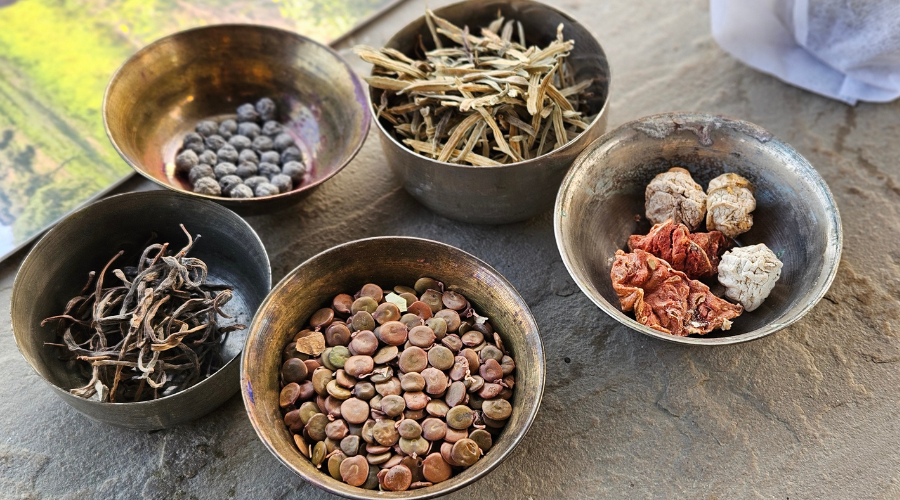Panchkuta Ki Sabzi: The Ancient Rajasthani Dish That Unites Royals And Farmers Alike
Made using five native ingredients preserved through sun-drying, Panchkuta ki sabzi tells a flavourful story of Rajasthan’s culinary resilience.
“While food is something that can divide us, it is also something that binds and brings us together,” said Dipali Khandelwal, who is the founder of The Kindness Meal, an organisation that works towards preserving Rajasthan’s culinary traditions, lost ingredients, and recipes.
One such dish that exemplifies this unity is panchkuta ki sabzi—a preparation that transcends social boundaries. Eaten by everyone from royals to farmers and labourers, it is a staple across the Thar desert region of western Rajasthan. More than just a dish, it stands as a symbol of the region’s culinary resilience and resourcefulness in the face of harsh, arid conditions.
The region witnesses little vegetation and thus survives on millets like jowar, bajra, and jaw. Wheat and rice were a rarity, and vegetables grew only during monsoons. This makes preservation, pickling, and sun drying important food techniques in this part of the state.
Panchkuta ki sabzi, a dish made from five sun-dried desert vegetables, is steeped in both rich flavour and deep history.

It is believed that when Rao Bika (the founder of Bikaner) moved from Jodhpur after denouncing his throne but a dream to find his own kingdom, he walked days to reach what is present-day Bikaner. On his arrival, the royal was greeted by a meal prepared by Karni Mata (an incarnation of Goddess Durga) which included bajre ka kheech, ghee, laapsi, and panchkuta ki sabzi.
Even today, during the Karni Mata Fair in Bikaner, every household in the city prepares this sabzi with phogle ka raita—with every household having its own recipe for it.
The dish features ker (green-colored, tangy, sun-dried wild berry), sangri (grown on the khejdi tree), leswa/gunda (gumberry), kachri (wild cucumber) and kumathiya (a pod with three seeds).
The peel of the kumathiya is used to prepare a separate vegetable while the seeds are preserved and sun dried to become brownish and then used in panchkuta ki sabzi.
The tanginess is added using kachri—which can be used as a powder or puree. These sun-dried elements are soaked in water overnight and then boiled with salt that rehydrates them.
The preparation is not just a dish but something that people associate and identify themselves with.